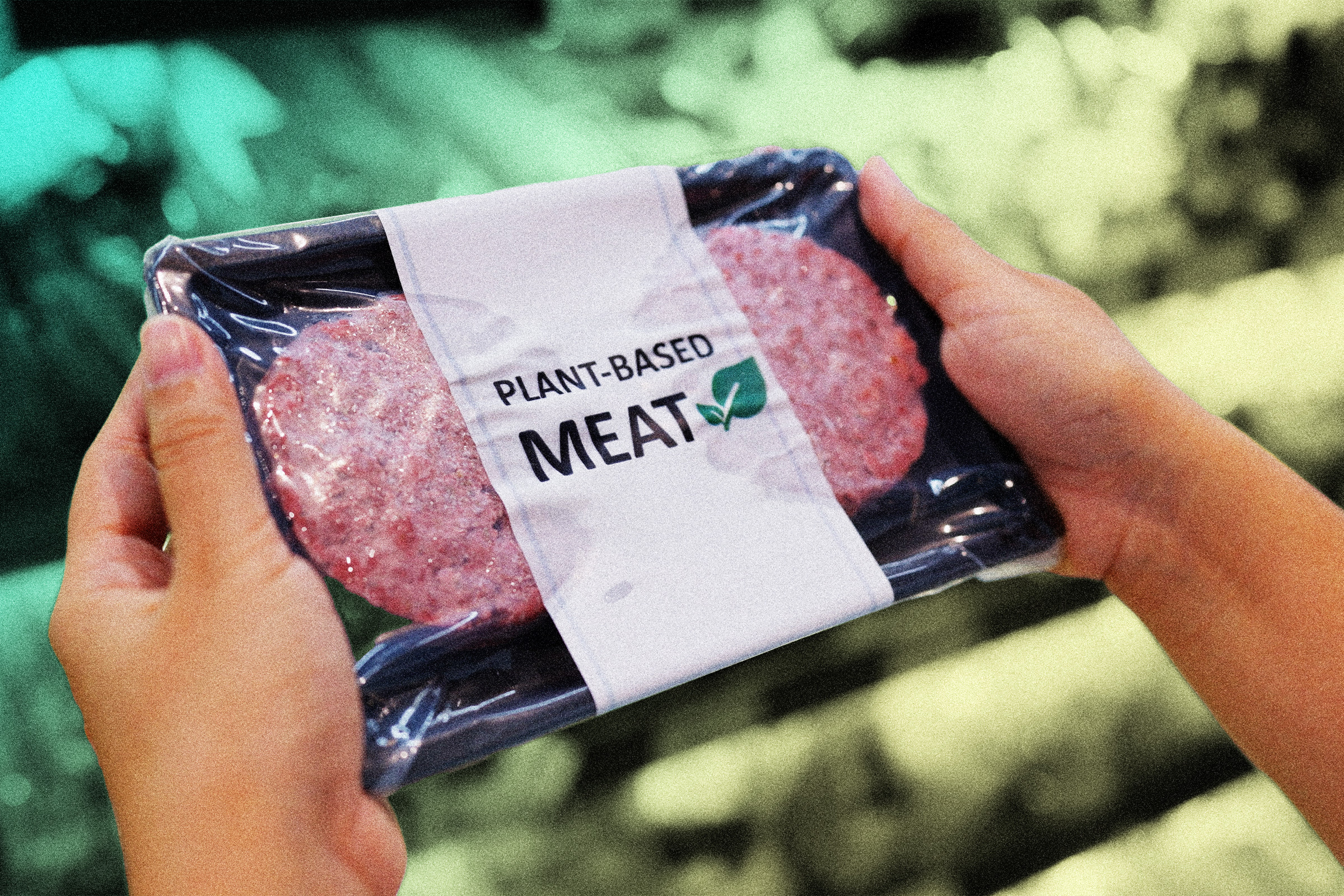We often hear that ultra-processed foods can make us unwell, but what about fake meat? Plant-based meat alternatives (PBMAs) are considered ultra-processed, which raises questions about how healthy they really are.
A new study published in Food Frontiers took a closer look at PBMAs, raising concerns that experts have already been discussing. Fortunately, wherever you fall on the PBMA issue, there are plenty of plant-based meals you can make at home that do not pose the health risks that can come with ultra-processed food.
Study Findings
The study found that PBMAs do not have clear risks but do raise concerns that merit further research. PBMAs were associated with increased depression, inflammation, and higher blood pressure, as well as lower levels of a substance tied to low levels of high-density lipoprotein, or “good” cholesterol.
Despite these negative effects, PBMAs were found to have several positive effects, including a decreased risk of irritable bowel syndrome, obesity, and metabolic diseases, such as diabetes.
Why PBMAs May Pose Risks
Ultra-processed food is known to have higher amounts of sodium, added sugar, and saturated fat than non- or low-processed food. Notably, researchers in the current study controlled for socioeconomic factors and differences in the amount of ultra-processed foods consumed.
Possible factors that may underlie the negative health effects include high amounts of processed ingredients, additives, and preservatives, all of which are often found in PBMAs and may contribute to inflammation, the researchers noted.
A review published in Nutrients noted that the high contents of sodium, added sugar, saturated fat, and trans fat in ultra-processed foods promote chronic inflammation. Other factors associated with these foods that may lead to inflammation include additives, such as artificial sweeteners and emulsifiers, as well as chemicals in the packaging, such as phthalates and bisphenol.
Helen Taylor, a holistic wellness coach with a master’s degree in biomedical science and genetic and regenerative medicine, provided additional insight on the subject. In an email to The Epoch Times, Taylor, who specializes in molecular and cellular immunology genetics, explained that many PBMAs are made of synthetic ingredients (such as protein isolates), vegetable oils, and additives to mimic the taste of meat.
“While they may appear like a good option on the surface, our bodies struggle to recognize and properly utilize these artificial substances,” Taylor said.
“I’ve seen how these products can disrupt the natural communication between the gut and brain, leading to inflammation and, as the Food Frontiers study suggests, even contributing to depression,” she wrote. “It’s as though the body is asking, ‘What is this?’—because it’s certainly not real food.”
Experts Weigh In
No consensus exists among health professionals on the health risks of PBMAs. Some experts advise complete avoidance, while others believe that they are fine when consumed in moderation.
Complete Avoidance
“I firmly believe people should avoid these products, even if they are plant-based,” Taylor said. “They lack the nutrient density and bioavailability of real, whole foods, and, in my experience, often do more harm than good.”
She recommended including grass-fed meat in the diet as a “far healthier choice.” Grass-fed meat is rich in high-quality protein, omega-3 fatty acids, and vital nutrients such as B12, all of which support brain health and help reduce inflammation, she said.
“If someone is committed to avoiding meat altogether, I’d recommend sticking with whole-food vegetarian options, like eggs or dairy, rather than relying on ultra-processed PBMAs,” Taylor said. “Your body deserves real nourishment—not a science experiment.”
Moderation
Moderate intake of PBMAs is not harmful, according to Catherine Gervacio, a registered nutritionist and dietitian consultant for Superfood Green Fusion. In an email to The Epoch Times, she said that whether to include PBMAs in meals depends on individual health goals, preferences, and how these products fit into an overall diet.
PBMAs are good options for enjoying familiar textures and flavors without eating meat, but they have the drawback of being highly processed, Gervacio said. According to her, if people enjoy PBMAs occasionally and the products help them stick to a vegetarian or vegan lifestyle, they are OK in moderation. Yet she advocated balancing them with whole, minimally processed plant foods such as beans, lentils, vegetables, and nuts.
Gervacio said that while focusing on whole foods reaps better health, “it’s about balance and what works for your body, lifestyle, and values.”
“Listen to your body, try new things, and find the mix that keeps you feeling your best,” she said.
Unprocessed Plant-Based Meal Ideas
People lead busy lives, so reaching for PBMAs is tempting because they provide quick, easy meals. Shoba Balaji, a registered dietitian nutritionist, urged people to transition from PBMAs to home-cooked, plant-based meals as a better option.
“Even though transition is hard initially, with time, it gets easier as you find recipes you like and your taste buds adapt to the change,” she said in an interview with The Epoch Times.
Balaji provided tips and meal ideas for preparing plant-based meals at home.
- Batch Cooking: Beans, lentils, quinoa, or brown rice can be cooked and frozen for later use. This saves time during busy weeks.
- Planning Ahead: Planning is important in all phases of life and also in what we eat. Prepare dishes ahead of time and refrigerate them in portion-sized containers to be used within three to four days. If you are making beans from scratch, soak them overnight.
- Invest in Time-Saving Equipment: Tools such as an instant pot, rice cooker, high-speed blender, hand blender, or panini grill can make cooking and prepping significantly faster.
- Mix and Match: Keep prepped ingredients such as roasted vegetables, cooked grains, and sauces ready to mix and match into wraps, bowls, or stir-fries.
- Spices and Herbs: Use different spices and herbs to add flavor.
Breakfast ideas include:
- Overnight Oats: Combine rolled oats, plant-based milk, chia seeds, and your choice of berries. Add peanut butter or protein powder for an extra boost. After refrigerating overnight, the oats are softened and ready to eat.
- Avocado Toast With Baked Beans: This is a savory twist on a classic, rich in fiber and plant protein. Add chili flakes for added taste.
- Toast With Nut or Seed Butter and Banana: This is simple, satisfying, and packed with healthy fats and protein.
- Yogurt Parfait: Layer unsweetened yogurt, granola, and fresh berries for a refreshing, protein-packed start.
- Protein Smoothie: Blend frozen fruits, plant-based milk, a handful of greens, and protein powder for a nutrient-dense breakfast on the go.
Lunch ideas include:
- Hummus and Veggie Sandwich: Spread hummus on whole-grain bread and layer with fresh vegetables such as cucumbers, bell peppers, and spinach.
- Pesto Panini With Grilled Tempeh: Tempeh adds a chewy, satisfying protein to this Mediterranean-inspired sandwich.
- Tofu and Veggie Wraps: Use a whole-grain tortilla and fill with marinated tofu, crunchy veggies, and a tangy dressing.
- Edamame and Chickpea Salad: Serve with a side of whole-grain pita bread for a complete, balanced meal.
- Black Bean Burger: Make patties with black beans, oats, and spices for a hearty and satisfying lunch.
Dinner ideas include:
- Rice, Chana Masala, and Curried Cauliflower: A flavorful, protein-rich dish that is naturally gluten-free.
- Quinoa Bowl With Tempeh and Veggies: Combine quinoa, roasted vegetables, and sautéed tempeh for a well-rounded dinner.
- Whole-Grain Rice Noodles With Tofu and Stir-Fried Vegetables: Stir fry with low-sodium soy sauce or liquid aminos, garlic, and ginger.
- Tacos or Enchiladas: Use pinto beans, sautéed vegetables, salsa, and guacamole for a vibrant and satisfying meal.
- Air-Fried Falafel With Hummus and Whole-Grain Pita Bread: Pair with a Greek salad with oregano and chili flakes for a delicious Mediterranean spread.












